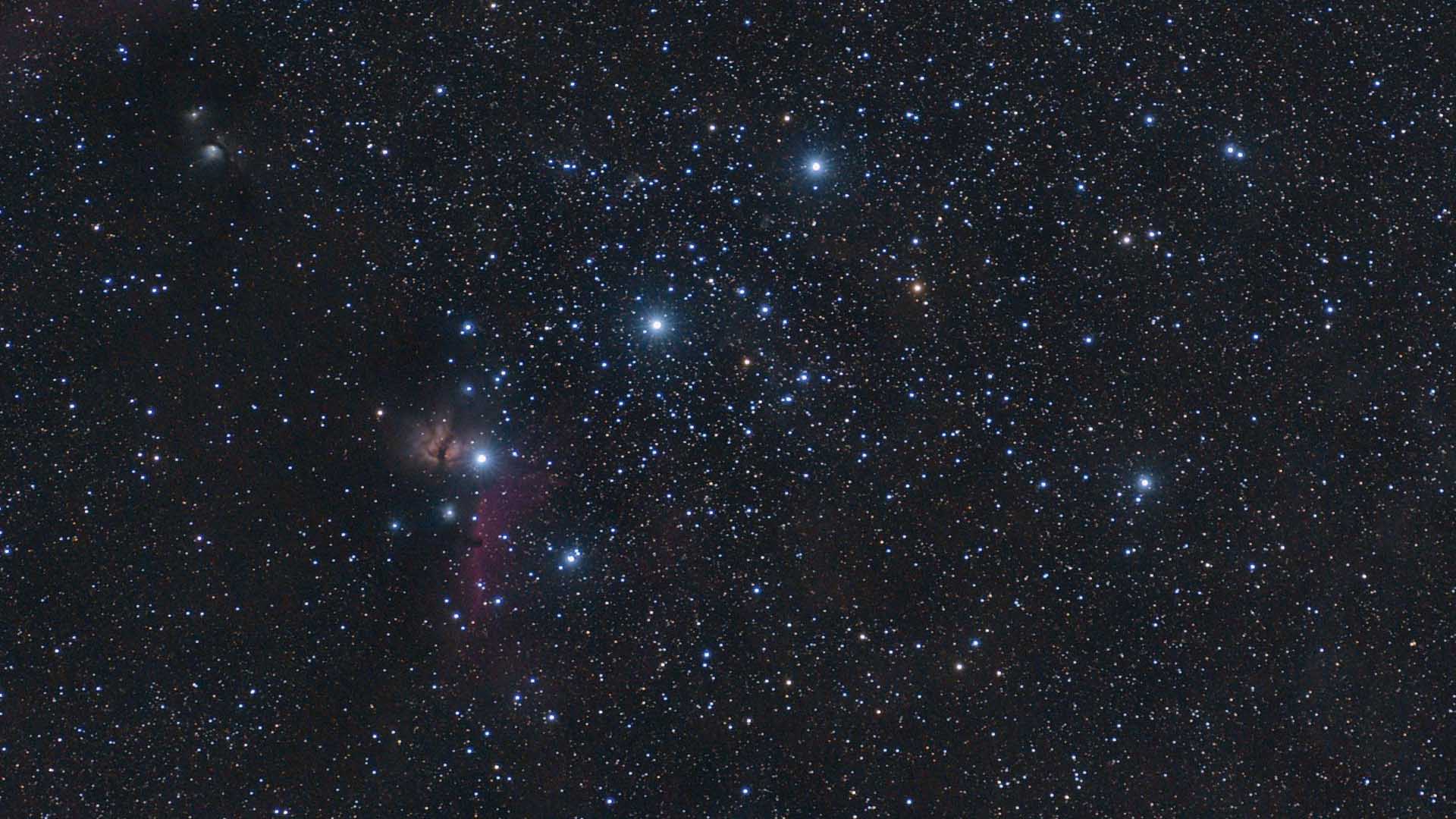Around the belt of the celestial hunter
Multiple stars, star clusters, and the brightest reflection nebula in the night sky: Orion offers binocular fans more than the great nebula.
 Orion's belt and sword reveal a series of highlights in the night sky. Marcus Degenkolbe
Orion's belt and sword reveal a series of highlights in the night sky. Marcus Degenkolbe Marcus Degenkolbe
Marcus DegenkolbeWith the Orion Nebula M42, this constellation has one of the most beautiful galactic nebulae of all, but on the way there our tour will take us to some other interesting celestial objects in the area.
Sparkling belt
Our starting point is the centre of Orion: the three stars in a row that make up the Belt of Orion. Observed with binoculars, you will quickly realise that many more, fainter stars are clustered around these gems, and together they form an open cluster: Collinder 70. If you look closely, the westernmost of the three bright belt stars appears to be a binary star in binoculars. At 53” distant, you should be able to separate Mintaka’s stars with 8-times magnification; supporting the binoculars helps with this enormously.
About 2.5° north-east of the easternmost belt star, which is called Alnitak, is Messier 78, the brightest reflection nebula in the night sky. This nebula does not generate any light itself, but reflects the light of a neighbouring star. It is difficult to detect in smaller binoculars and even with 10×50 binoculars, M78 appears only as a small, unstructured nebulous fleck. However, in larger binoculars, only a few arc minutes to the north another, albeit fainter, nebula reveals itself: NGC 2071.
Glittering sword
Around 3.5° south of Orion’s Belt, a vertical formation known as Orion’s Sword is also visible with the naked eye. A pair of binoculars reveals a fascinating peek into the splendour of this celestial region full of nebulae and star clusters, which alone would make an interesting sightseeing tour.
To the far north is the open cluster NGC 1981, which can be resolved with small binoculars. While the reflection nebula NGC 1977, which is to the south, can only be observed with 10×50 binoculars under good conditions, the large diffuse nebula Messier 42 immediately catches the eye. In its bright interior is the star system θ Orionis. Two or three components can be resolved with binoculars. The size of the nebula depends very much on the seeing. If this is good, a small annex should stand out at the northern edge of M42. Although belonging to the Orion Nebula, it is listed as a separate object under the name Messier 43. The southern end of the sword is formed by the open cluster NGC 1980 around the star Nair al Saif (ι Orionis), which also can be resolved with small binoculars.
 Location map of the objects in this binoculars tour: most of these objects can be found in the night sky without any difficulty. J. Scholten
Location map of the objects in this binoculars tour: most of these objects can be found in the night sky without any difficulty. J. ScholtenAuthor: Kay Hempel / Licence: Oculum-Verlag GmbH
